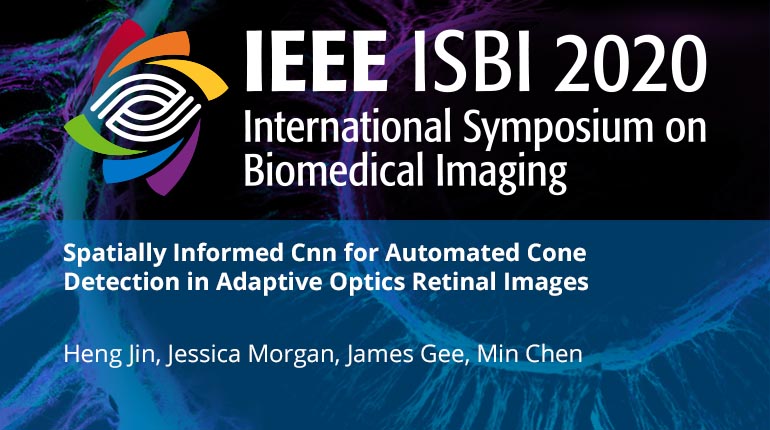
Already purchased this program?
Login to View
This video program is a part of the Premium package:
Spatially Informed Cnn for Automated Cone Detection in Adaptive Optics Retinal Images
- IEEE MemberUS $11.00
- Society MemberUS $0.00
- IEEE Student MemberUS $11.00
- Non-IEEE MemberUS $15.00
Spatially Informed Cnn for Automated Cone Detection in Adaptive Optics Retinal Images
Adaptive optics (AO) scanning laser ophthalmoscopy offers cellular level in-vivo imaging of the human cone mosaic. Existing analysis of cone photoreceptor density in AO images require accurate identification of cone cells, which is a time and labor-intensive task. Recently, several methods have been introduced for automated cone detection in AO retinal images using convolutional neural networks (CNN). However, these approaches have been limited in their ability to correctly identify cones when applied to AO images originating from different locations in the retina, due to changes to the reflectance and arrangement of the cone mosaics with eccentricity. To address these limitations, we present an adapted CNN architecture that incorporates spatial information directly into the network. Our approach, inspired by conditional generative adversarial networks, embeds the retina location from which each AO image was acquired as part of the training. Using manual cone identification as ground truth, our evaluation shows general improvement over existing approaches when detecting cones in the middle and periphery regions of the retina, but decreased performance near the fovea.
Adaptive optics (AO) scanning laser ophthalmoscopy offers cellular level in-vivo imaging of the human cone mosaic. Existing analysis of cone photoreceptor density in AO images require accurate identification of cone cells, which is a time and labor-intensive task. Recently, several methods have been introduced for automated cone detection in AO retinal images using convolutional neural networks (CNN). However, these approaches have been limited in their ability to correctly identify cones when applied to AO images originating from different locations in the retina, due to changes to the reflectance and arrangement of the cone mosaics with eccentricity. To address these limitations, we present an adapted CNN architecture that incorporates spatial information directly into the network. Our approach, inspired by conditional generative adversarial networks, embeds the retina location from which each AO image was acquired as part of the training. Using manual cone identification as ground truth, our evaluation shows general improvement over existing approaches when detecting cones in the middle and periphery regions of the retina, but decreased performance near the fovea.
 Cart
Cart Create Account
Create Account Sign In
Sign In





